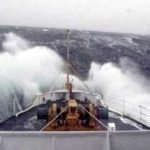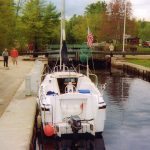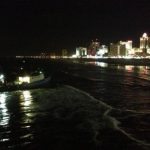Carbon Monoxide (CO) accumulation is affected by a multitude of variables, such as boat geometry, hatch openings, ventilation, proximity to other structures, swim platforms, canvas, location of exhaust outlets, vessel attitude, wind speed and direction, boat speed, and system maintenance.
You should install and maintain CO alarms inside your boat. Replace them when necessary, and don’t ignore any alarms.
Never sit, teak surf, or hang on the back deck or swim platform while the engines and/or generators are running. Teak surfing is NEVER a safe activity!
Maintain fresh air circulation throughout the boat at all times. Run the exhaust blowers whenever the generator is operating.
Know where your engine and generator exhaust outlets are located, and keep everyone away from these areas.
Never enter areas under swim platforms where exhaust outlets are located unless the area has been properly ventilated.
CO can be present without the smell of exhaust fumes. But if you DO smell exhaust fumes, CO is also present. Take immediate action to dissipate the exhaust fumes.
Treat symptoms of seasickness with suspicion of carbon monoxide poisoning. Get the person into fresh air at once, and unless you are absolutely sure of seasickness, seek medical attention.
Know where and how CO may accumulate in and around your boat. For a copy of the Coast Guard brochure “Carbon Monoxide Poisoning; What You Can’t See…”, visit the Coast Guard website, or call 800-368-5647.
Get a Vessel Safety Check from a certified examiner of the U. S. Coast Guard Auxiliary or U. S. Power Squadrons. (For more information, visit www.safetyseal.net.)








